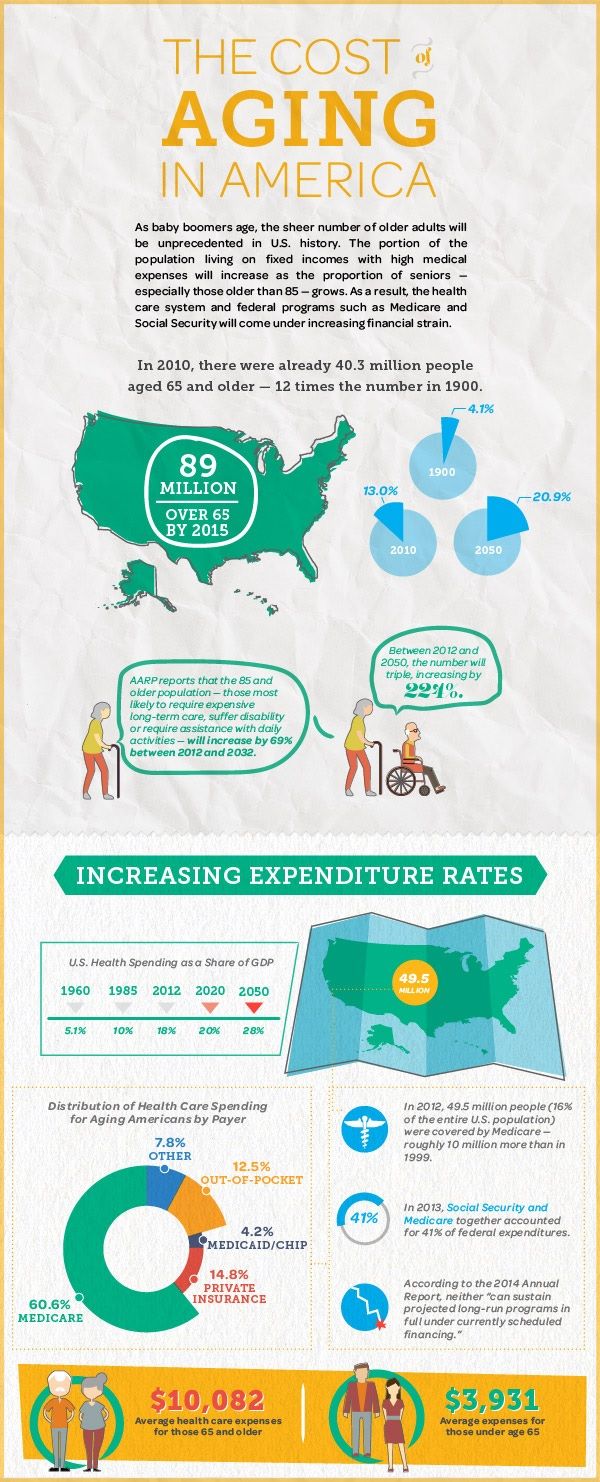Article
The Economic Implications of Aging
Author(s):
A look at the economic implications of aging and what can be done to address the growing healthcare financial challenges.
Over the past century, there have been tremendous advances in medicine—and the rapid growth of America’s aging population provides clear evidence of just how effective this dynamic has been.
In 1900, individuals older than 65 years of age made up just 4% of the US population—but by 2050, that number is expected to be as high as 20%. Although longevity is one of the goals of medical progress, it can also come with a price—especially for those older than 85 years—who typically require expensive levels of support in a variety of settings.
To explore the economic implications of aging, MPH@GW—George Washington University’s online Master of Public Health program—created an infographic to help visualize the impact, as well as what can be done to help address the growing financial challenges for aging Americans and their families.
Who Is Affected?
Of all the stakeholders who are affected by this dynamic, individuals older than 85 years bear the most direct impact. This demographic often requires expensive long-term care, suffers disability, and/or requires assistance with activities of daily living—and their numbers are growing. According to AARP, there will be 69% more Americans in this age bracket by 2032, and 224% more by 2050.
There are a variety of others who are affected as well, including family caregivers, who provided $450 billion in uncompensated care in 2009. In addition, society as a whole is affected, as well as health policymakers who are developing strategies to address rising healthcare costs.
What Is the Impact?
As noted, the cost of aging places a significant burden on society as a whole. US health spending as a share of gross domestic product (GDP) was 5.1% in 1960 and is predicted to rise to 20% by 2020 and 28% by 2050. Safety net programs, like Medicare and Social Security, help provide direct payments to the healthcare system and the financial support that many older Americans count on. In 2013, the 2 programs accounted for 41% of federal expenditures—a trend that has been cited by experts as being unsustainable in the long term within the current framework.
Where Are the Solutions?
Finding a solution to the high price of aging is essential because the current model for support isn’t viable if growth predictions are accurate. There are many avenues in which to address this—which, in some cases, may start with older Americans themselves.
Chronic diseases, many of which are impacted by lifestyle choices, escalate costs and have a high incidence of co-morbidities. This is evidenced by the fact that of adults with diabetes, only 9.3% of them have diabetes alone.
In addition, the following strategies may prove effective:
- Investing in direct-care providers to improve chronic disease management, including the use of managed care
- Integrating life and care models to provide ongoing support outside of healthcare environments
- Improved health information technology integration and communication to optimize continuity of care
- Increased end-of-life education to ensure that patients receive the level and intensity of care they desire and help families prepare for what may lie ahead
By working together, and integrating strategic interventions, the rising costs of healthcare can be addressed.

Access the full infographic by visiting MPH@GW.





